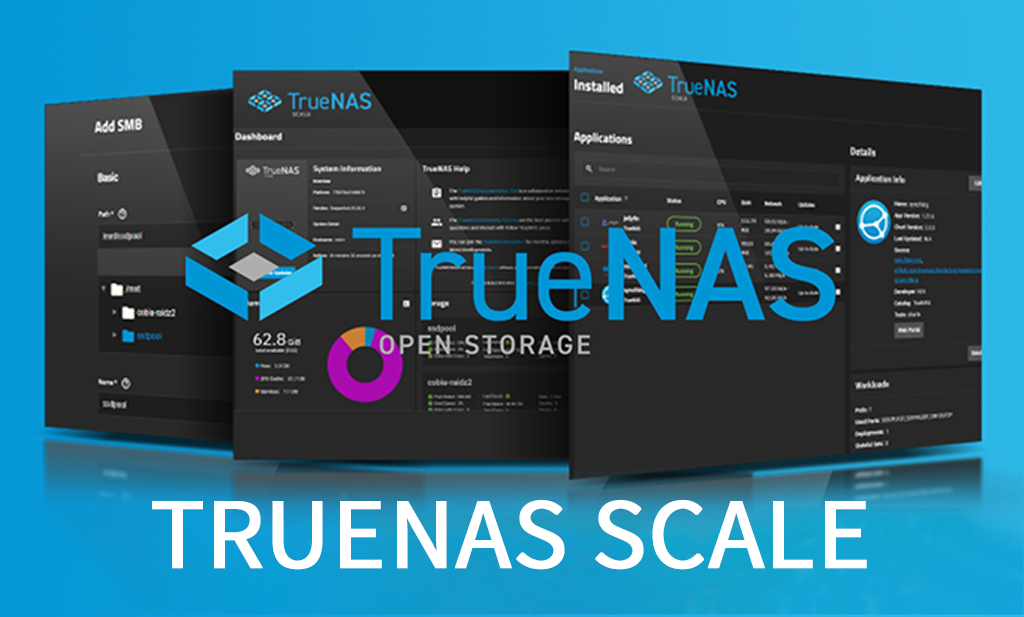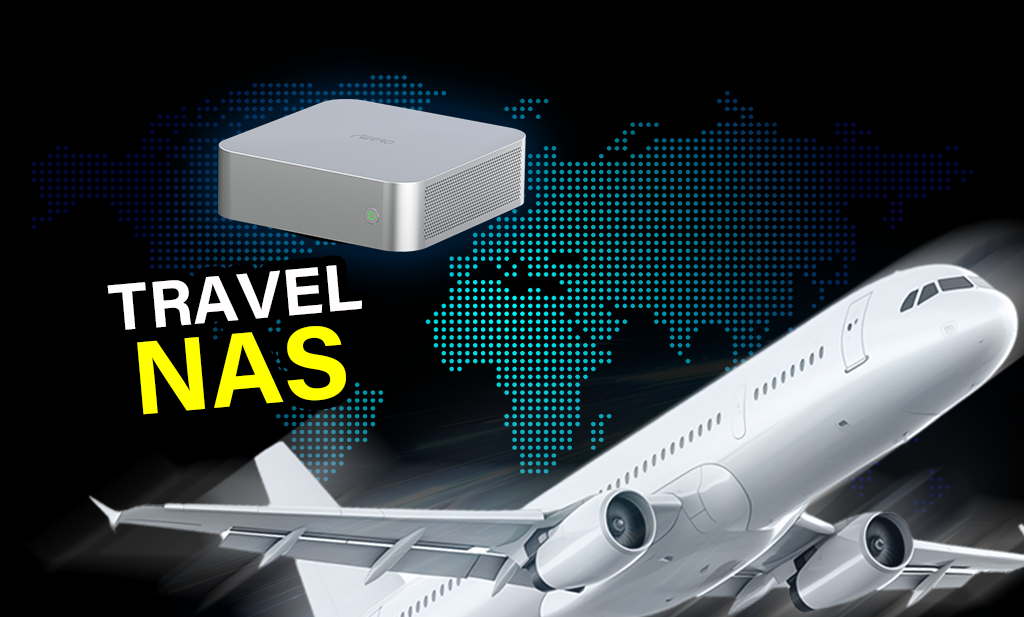A person with technical knowledge can only understand “TrueNAS SCALE” and how to install TrueNAS SCALE in All-Flash NAS K100. It’s a general perception but not entirely true. Yes, installing and setting up TrueNAS SCALE on your Aiffro K100 All-Flash NAS might sound technical, but at the core, it’s quite manageable. A person with basic tech knowledge can install it the very first time if they follow the right guidelines.
K100 NAS is already the best in benefiting users who want it for backing up data or hosting apps like Nextcloud or Plex. Installing TrueNAS SCALE will be your first step in making your NAS fully functional.
We are sharing the right guide on how to install TrueNAS SCALE in All-Flash NAS K100 here. We use simple and clear language so that you don’t get lost in tech-heavy terms.
What Is TrueNAS SCALE?
TrueNAS SCALE is a free and open-source operating system. It’s based on Linux and designed explicitly for NAS systems. It benefits all users regardless of their requirements for home and professional use. You can create storage pools and share files across your network. TrueNAS SCALE allows users to even run apps inside their NAS.
Why You Need To Install TrueNAS SCALE on your Aiffro K100?
- The K100 uses all-flash SSDs, which are fast and work great with TrueNAS SCALE.
- TrueNAS gives you a powerful web interface to manage everything.
- It supports RAID setups and the ZFS file system. It protects your data from drive failure
What You Need to Install TrueNAS SCALE on the Aiffro K100 All-Flash NAS
Before you begin installing TrueNAS SCALE, you need to gather these items:
Hardware:
- Aiffro K100 All-Flash NAS (powered off)
- A USB flash drive of at least 8GB
- A separate computer (Windows, Mac, or Linux) to prepare the USB
- Keyboard and monitor (for temporary setup)
- Ethernet cable and network access
Software:
- TrueNAS SCALE ISO file
- Balena Etcher (or Rufus) for creating a bootable USB
How to Install TrueNAS SCALE in All-Flash NAS K100
Here is my detailed guide that helps you install a TrueNAS SCALE in a K100 or a similar kind of All-flash NAS.
Step 1: Download the TrueNAS SCALE ISO
- Open your web browser and visit the official TrueNAS website
- Select the latest stable version of TrueNAS SCALE.
- Click on the Download ISO button and save it to your computer.
Step 2: Create a Bootable USB Drive
Now, we’ll use a tool to copy the ISO to your USB in a bootable format. I prefer Balena Etcher; you can also use Rufus. The following is the process that works with Balena Etcher.
- Download and install Balena Etcher from https://etcher.balena.io/
- Open Etcher and click Flash from file.
- Choose the TrueNAS SCALE ISO you downloaded earlier.
- Insert your USB drive and select it.
- Click Flash!
- Keep waiting for the process to complete
- Safely remove the USB
Step 3: Boot the K100 from USB
- Plug your monitor and keyboard into the K100.
- Insert the bootable USB drive into one of the USB ports.
- Turn on the K100.
- As it starts, press the key to access the boot menu (usually F12, DEL, or ESC, depending on your motherboard).
- Select your USB drive from the list and hit Enter.
You’ll now see the TrueNAS SCALE installer screen.
Step 4: Install TrueNAS SCALE
Follow the given process to go through the installer step-by-step:
- You get the welcome screen
- Select Install/Upgrade
- Choose the internal SSD or storage as a location to install the OS. Do not select the drives you’ll use for data.
- Check that the drive is erasable, as the installer will format it.
- Set the root password. You’ll need this to log in later.
- Wait for a few minutes because the installation takes time.
- After installation, you must remove the USB drive and reboot the K100
Step 5: Access the Web Dashboard
When you restart, K100 will boot into TrueNAS SCALE. You’ll see a message on the screen, like:
“To access the web interface, go to (IP Address).”
- Open your browser on another computer connected to the same network.
- Type the IP address after seeing it from the K100 screen.
- It’ll take you to the TrueNAS login page.
- Enter:
-
- Username: root
- Password: the one you set during the install
You’re now inside the TrueNAS dashboard.
Step 6: Set Up Your Storage
Now, it’s time to configure your storage pool.
Create a ZFS Pool:
- Go to Storage in the side menu.
- Click Pools, then Add.
- Choose Create New Pool.
- Select your SSDs from the list (these are the main storage drives).
-
Choose a RAID type:
- RAIDZ1 if you want some protection and good space usage.
- RAIDZ2 for more protection (at the cost of some space).
- Name your pool and click Create.
This will prepare your drives to store data using the ZFS file system.
Step 7: Set Up File Sharing
Here, I have given two common methods you can choose to access your files.
SMB Share For Windows Users:
Go to Sharing > Windows Shares (SMB).
Click Add.
Choose a dataset (folder) to share.
Give it a name like “Documents”.
Enable the share.
Now, you can access it from any Windows PC on the same network.
NFS Share for Linux/macOS Users:
Go to Sharing > Unix Shares (NFS).
Add the dataset
Allow the IPs you want to give access to.
Step 8: Install Apps: This Is Optional, But For Your Ease, Here It Is
TrueNAS SCALE supports many built-in and third-party apps.
To install apps:
Click on Apps in the menu.
Select the TrueCharts catalog. You may need to enable it.
Browse apps like:
Plex for media streaming
Nextcloud for private cloud storage
Syncthing for syncing files across devices
Click Install and follow the settings.
As a final step, the app opens.
Some Suggestions For Lesser Challenges
Change IP to Static. It’s better to assign your K100 a fixed IP in your router settings.
Enable alerts by configuring email alerts under System Settings > Alert Services.
Once setup is complete, go to System Settings > General and save your configuration file.
In What Scenarios Can You Use It
Let’s say you want to create a media server:
Install Plex via the Apps section.
Upload your videos to the ZFS pool.
Access your media from your TV or mobile devices over Wi-Fi.
Or maybe you run a small business:
Use SMB shares to store and share files between team members.
Protect data with RAIDZ2.
Set up snapshots for quick recovery.
You May Find Some Issues While Installing. Here Are The Solutions.
|
Issue |
Solution |
|
K100 doesn’t boot from USB |
Try another USB port or remake the bootable USB |
|
No IP address appears |
Make sure you connect the Ethernet to a working network |
|
Can’t find storage drives |
Check if they are plugged in and not used as boot disk |
Conclusion
It is beneficial to install TrueNAS SCALE on your Aiffro K100 All-Flash NAS for your workflow. It gives you full control over your storage system using reliable open-source software. What you get after its installation is secure storage of your files, smooth running of useful apps, and sharing data across your network with ease.
If you are not an expert, don’t worry. Our easy-to-follow methods help you safely install TrueNAS SCALE in the All-flash NAS K100 without errors.





Hinterlasse einen Kommentar
Diese Website ist durch hCaptcha geschützt und es gelten die allgemeinen Geschäftsbedingungen und Datenschutzbestimmungen von hCaptcha.